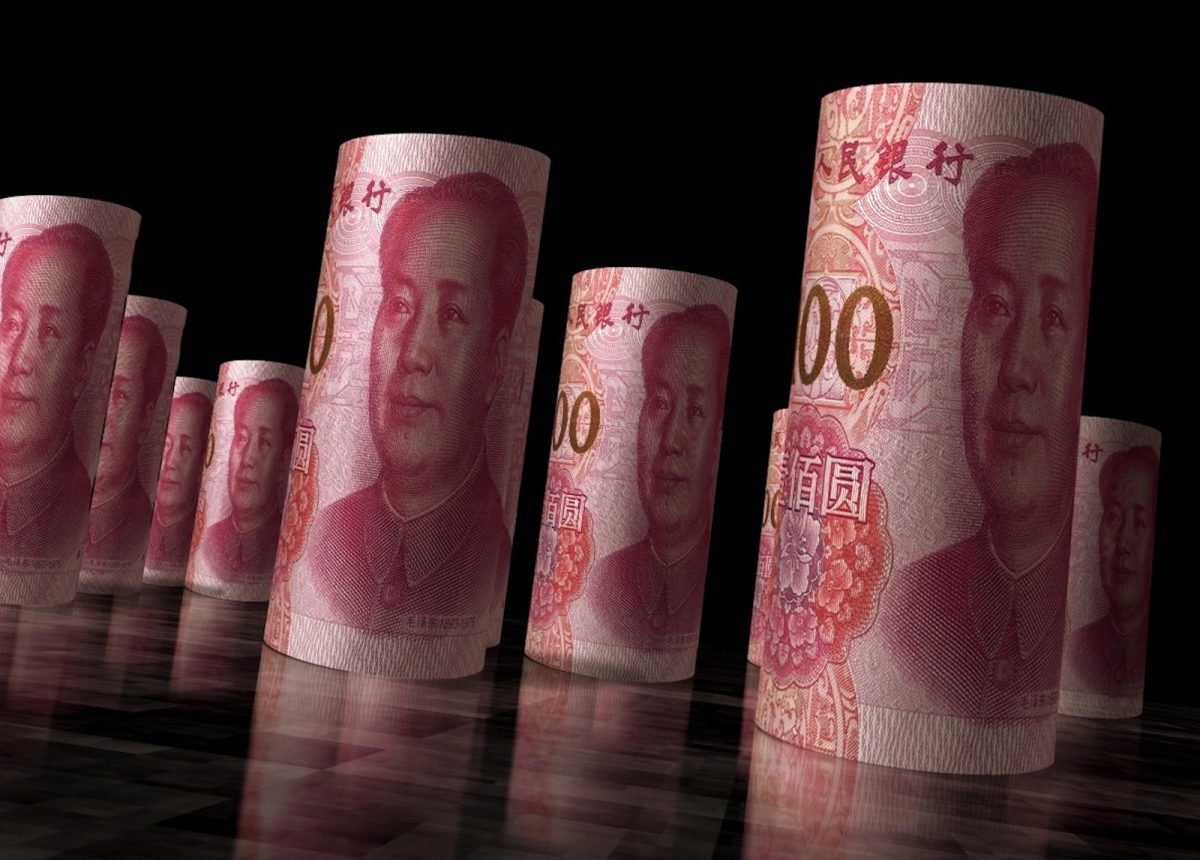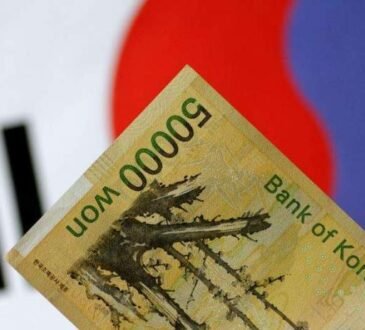As the “Trump trade” returns to make fear of geopolitical upheaval great again, global hedge funds are racing to short China’s yuan currency.
They are betting that Trump’s planned mix of tax and trade policies will send the dollar higher if he’s elected and that China might seek a more competitive exchange rate as domestic growth slows.
Yet, if the last few years of the Xi Jinping era are any guide, betting on a weaker yuan could be quite the blunder,
Let’s start with the Trump calculation. Clearly, the November 5 US election is a genuine toss-up. One day, polls suggest Kamala Harris’ Democrats will prevail. The next, intel emerges to telegraph a Trump 2.0 White House is coming.
This week, the momentum seems to be on Trump’s side. It’s prompting hedge funds to up bets on a weaker yuan in the US$300 billion currency options market. Yuan volatility is now at its highest since late 2022.
Yet expectations that Trump might favor a stronger dollar seem to forget his 2017-2021 term. Trump was adamantly in favor of a weaker US exchange rate to advantage American manufacturers and punish China.
It’s also worth remembering Trump’s assault on the US Federal Reserve. Trump was apoplectic that his chosen Fed chairman, Jerome Powell, continued predecessor Janet Yellen’s rate hikes. He then browbeat Powell into cutting rates, adding stimulus in 2019 that the economy didn’t need.
On top of the Fed’s dented credibility, the US national debt soared under Trump and current President Joe Biden, now topping $35 trillion.
Add in the risk of political polarization between now and January 20, 2025, when the next administration formally takes office. Even if Trump loses, no serious pundit thinks he will go away quietly.
The fallout from the January 6, 2021 insurrection that Trump fomented was among the reasons Fitch Ratings revoked its AAA rating on US debt, joining Standard & Poor’s. The question now is Moody’s Investors Service, which is the last rating company to grade America AAA.
Yet the Beijing part of this puzzle is more important. There are at least four reasons why Beijing would be unlikely to allow the yuan to sink too much.
One, a falling yuan might make it harder for highly indebted companies like property developers to make payments on offshore debt. That would increase default risks in Asia’s biggest economy. Seeing #ChinaEvergrande trending again in cyberspace is the last thing Xi wants.
Two, the monetary easing needed to sustain the yuan’s declines — particularly with the Fed cutting rates, too — could damage Xi’s deleveraging efforts. Over the last few years, Xi’s inner circle has made big strides in weeding out financial excesses.
This explains why Xi and Premier Li Qiang have been reluctant to allow the People’s Bank of China (PBOC) to slash rates more assertively, even as deflationary pressures stalk China Inc.
Three, increasing the yuan’s global use is arguably Xi’s biggest economic reform success since 2012. In 2016, China won a place for the yuan in the International Monetary Fund’s “special drawing rights” basket, joining the dollar, yen, euro and pound.
Since then, the currency’s use in trade and finance has soared. Excessive easing now might dent trust in the yuan, slowing its progress toward reserve-currency status.
Four, it could make China a bigger and more contentious issue during a uniquely bitter US election. The one thing on which Trump’s Republicans and Democrats loyal to Harris agree is on being tough on Beijing.
Hints that China is manipulating the yuan lower could trigger bipartisan scorn in Washington. Especially with the Trump camp, which is already telegraphing 60% tariffs on all Made in China goods.
“As well as tariffs, the tag of ‘currency manipulator’ may be a first red flag for an Asian economy,” said Robert Carnell, Asia-region head of research at ING Bank.
For Xi to green light a weaker yuan would be to signal an element of panic and desperation. Not the kind of headlines Xi wants global investors to be contemplating as 2025 approaches.
Instead, Xi and Li have been ratcheting up the stimulus without triggering echoes of 2015, 2008 and other previous episodes of massive pro-growth “bazooka” blasts.
Earlier this month, Beijing cut borrowing costs, slashed banks’ reserve requirement ratios, reduced mortgage rates and unveiled market-support tools to put a floor under share prices. Bolder fiscal stimulus steps are being mulled, too.
On Thursday (October 17), Team Xi raised the loan quota for unfinished housing projects to 4 trillion yuan ($562 billion), nearly double the previous amount.
The bump was less than markets wanted, as evidenced by Chinese stocks falling into “correction” territory this week. The CSI 300 Index ended Tuesday down 1.1%, bringing its declines since an October 8 high to roughly 11%.
The bigger issue, of course, is repairing the balance sheets of giant property developers.
“They’re still trying to talk the talk, with more noise about stabilizing the property market,” said Stephen Innes, an economist at SPI Asset Management.”
As Thursday’s housing moves were “rolled on, it was clear: traders were not thrilled,” Innes said. “Let’s be honest, though – China’s property mess isn’t something that can be patched up with a few speeches and half-baked measures.”
Economist Robin Xing at Morgan Stanley added that “resolving the debt issue is a critical step in stopping a key deflationary downward spiral,” saying it’s “equally important to direct demand stimulus.”
In recent years, Team Xi made several pledges to devise a mechanism to get toxic assets off property developers’ balance sheets.
Beijing has indeed demonstrated what’s needed to turn things around: a bold strategy to strengthen the finances of good-quality developers; incentivizing mergers and acquisitions; improving capital markets so that consumers stop seeing property as their only investment option; and creating social safety nets so that households spend more and save less.
Indeed, there are ample crises over the last several decades from which to learn. They include Japan’s efforts in the early 2000s to get toxic loans off of banks’ balance sheets and the Troubled Asset Relief Program, or TARP, that the US used to contend with troubled assets post-2008.
More fundamentally, Xi’s reform team must step up efforts to recalibrate growth engines away from exports toward innovation and high-niche industries.
It must reassure investors that the draconian crackdowns on tech companies since 2020 are over. China also must drop its aversion to the basic economic transparency that global funds demand.
But as Xi and Li understand, a weaker yuan won’t bring about any of these big-picture reforms. It might buy China some time to make this year’s 5% growth target, but at a higher cost than Chinese top leaders seem willing to accept.
Back in the US, there are myriad other reasons to think the dollar’s outlook will contain more red ink than black.
The US national debt now being twice the size of China’s annual gross domestic product is one concern. But so are the reasonable odds that Trump, in a second term, might dust off some of the financial stunts he mulled during the first – only to be stopped by economic advisers.
One was Trump mulling canceling portions of debt the US owed Beijing to punish Xi’s economy amid trade negotiations. Such considerations were hardly out of the blue.
In May 2016, six months before he was first elected, Trump, a serial bankruptcy offender as a businessman, floated reneging on US debt in a CNBC interview.
“I would borrow, knowing that if the economy crashed, you could make a deal,” Trump said. “And if the economy was good, it was good. So therefore, you can’t lose.”
Moody’s Analytics economist Mark Zandi spoke for many when he called the idea of reneging on US debt “complete craziness” that “would be financial Armageddon.”
Trump 1.0 considered a dollar-to-yuan devaluation of the kind that Argentina or Vietnam might employ. In April, for example, Politico reported that Trump 2.0’s inner circle is “actively debating” an Argentina-like pivot at the behest of advisors like Robert Lighthizer, Trump’s former international trade representative.
Yet, instead of “America first,” such a detour might do more to advantage China in the longer run. If devaluation were a strategy for prosperity, Buenos Aires would be running a Group of Seven economy. Turkey and Zimbabwe would be booming. Indonesia would be giving China a run for its money as Asia’s biggest economy.
The US trying this gambit would exacerbate inflationary pressures and risk the dollar’s status as reserve currency – to China’s benefit.
“While Trump and his team have been vocal in their calls for a weaker US dollar to aid US manufacturing competitiveness, investors generally believe the policies they are advocating to promote US reindustrialization – steep tariffs on goods imports – will tend to lead to dollar strength versus other currencies,” Gavekal analysts wrote in a note.
But, they added, the “likely consequences of this disconnect include a potential conflict between the White House and Fed, and a diplomatic drive to weaken the US dollar, possibly involving a new version of the 1985 Plaza Accord.”
Trying such a gambit in 2024 would be extraordinarily destabilizing. Odds are very low that Xi would go for it. Aside from the Communist Party’s aversion to getting pushed around, China recalls how Japan accepting a stronger yen ravaged its economy for decades to come.
Even so, hedge funds betting on a weaker yuan in the months ahead might be missing the bigger picture of the Xi era.
Follow William Pesek on X at @WilliamPesek





